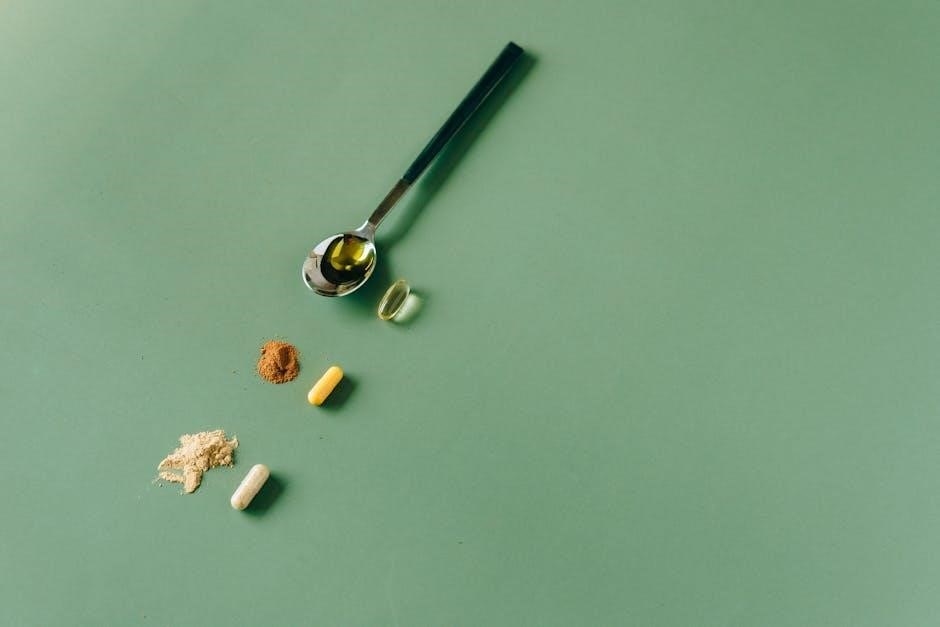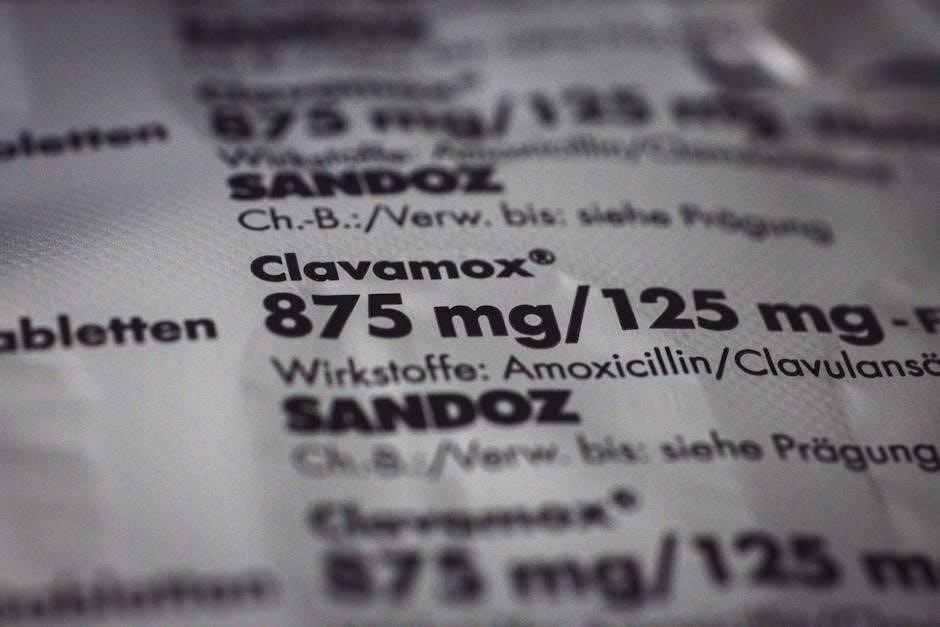The Pill Cam is a small, camera-equipped capsule used for capsule endoscopy, providing a minimally invasive way to visualize the small intestine and detect abnormalities like bleeding or inflammation.
What is a Pill Cam?
A Pill Cam is a small, vitamin-sized capsule containing a tiny video camera used to visualize the inside of the gastrointestinal tract, particularly the small intestine. It captures images as it moves through the digestive system, aiding in the diagnosis of conditions like bleeding, inflammation, or abnormalities. The camera transmits images to a sensor belt worn by the patient, which records data for later analysis by a healthcare provider. Unlike traditional endoscopy, the Pill Cam is non-invasive and requires no sedation, making it a comfortable option for patients. It is typically used when conventional imaging methods fail to provide sufficient information. The procedure is straightforward, with the capsule being swallowed and the sensor belt worn for approximately 8-12 hours to capture the necessary footage.

Purpose of Capsule Endoscopy
Capsule endoscopy, utilizing the Pill Cam, aims to diagnose gastrointestinal disorders that are difficult to detect through traditional methods. It is primarily used to investigate unexplained gastrointestinal bleeding, Crohn’s disease, celiac disease, and small intestinal tumors. The procedure captures high-resolution images of the small intestine, an area often inaccessible to standard endoscopes. By providing detailed visuals, it helps identify abnormalities such as ulcers, polyps, or inflammation. Capsule endoscopy is a valuable tool for patients with persistent symptoms like abdominal pain or anemia, offering insights that guide targeted treatment. It is also used to monitor disease progression and assess the effectiveness of therapies in certain conditions. This non-invasive approach enhances patient comfort and reduces recovery time compared to conventional endoscopic procedures.
Pre-Procedure Instructions
Preparation is crucial for capsule endoscopy. Stop iron supplements 5 days before and follow a liquid diet the day prior. Ensure proper bowel preparation and avoid certain medications as advised by your doctor to ensure optimal imaging results.
5 Days Before the Procedure
Five days before your capsule endoscopy, stop taking oral iron supplements and check your multivitamins for iron content. Notify your doctor if iron is present. Avoid resuming iron supplements until after the procedure to prevent interference with the capsule’s imaging. This preparation ensures clearer images of your digestive tract during the exam. Additionally, review your medications with your doctor, as some may need to be adjusted. Proper preparation is essential for accurate results and a successful procedure. Adhere to these guidelines carefully to avoid complications and ensure the capsule functions optimally during its journey through your system.
Day Before the Procedure
The day before your capsule endoscopy, start a prescribed liquid diet after lunch. Avoid eating or drinking anything except for necessary medications with a small sip of water. At 6 p.m., consume one bottle of magnesium citrate or two capfuls of Miralax to prepare your digestive system. Do not eat or drink after 10 p.m., except for sips of water with medications if required. This preparation ensures your digestive tract is clear for the capsule to capture accurate images. Adhere strictly to these guidelines to ensure the procedure’s success and avoid any complications. Proper preparation is crucial for obtaining clear and detailed results from the capsule endoscopy;
Final Preparations on the Day of the Procedure
On the day of the procedure, wake up and avoid eating or drinking anything. Arrive at the clinic as directed by your healthcare provider. Once there, you will ingest the Pill Cam capsule with a small amount of water. After swallowing the capsule, you must not eat or drink for 2 hours. Clear liquids can be consumed after 2 hours, and a light meal can be eaten 4 hours later. Ensure you wear the provided sensor belt throughout the procedure to capture accurate data. Avoid exposure to strong electromagnetic fields, such as MRI machines, until the capsule passes naturally. Carry the event log to record activities like eating or drinking. Follow these steps carefully to ensure the procedure’s success and clear imaging results.

Day of the Procedure
On the procedure day, arrive at the clinic, ingest the Pill Cam capsule, and wear the sensor belt. Avoid eating and drinking for two hours post-ingestion.
Ingesting the Capsule
Ingesting the Pill Cam capsule is straightforward. Swallow it whole with a glass of water. Avoid chewing or breaking the capsule to ensure proper function. After swallowing, do not eat or drink for two hours to allow the capsule to move through your digestive system without interference. You may drink clear liquids after two hours and eat a light meal after four hours. Ensure you follow the exact instructions provided by your healthcare provider regarding ingestion timing and post-ingestion activities. Proper ingestion is crucial for capturing clear images of your small intestine. Avoid lying down immediately after swallowing the capsule to prevent dislodgment. If you experience any discomfort or difficulty swallowing, inform your doctor immediately.
Post-Ingestion Guidelines
After swallowing the Pill Cam, avoid eating and drinking for 2 hours to ensure proper movement through the digestive tract. Clear liquids may be consumed after 2 hours, and a light meal can be eaten 4 hours post-ingestion. Wear the provided sensor belt throughout the procedure to capture data from the capsule. Avoid strong electromagnetic fields, such as MRI machines or microwaves, as they may interfere with the device. Refrain from strenuous activities that could disrupt the capsule’s movement. Record any significant activities, such as eating, drinking, or bowel movements, in the provided event form. This helps correlate capsule images with specific times. Do not remove the sensor belt until instructed by your healthcare provider, typically after 8 hours or when the procedure is complete.
Post-Procedure Care
Wear the sensor belt until instructed to remove it, typically after 8 hours. Return the equipment to your doctor, including the data recorder and belt. The capsule will naturally pass through your system within a few days. Avoid tampering with the device or removing any parts. Follow all post-procedure instructions provided by your healthcare provider to ensure accurate results and proper completion of the study.
Wearing the Sensor Belt
The sensor belt is a crucial component of capsule endoscopy. It should be worn snugly around your waist or with sensor pads placed on your stomach, as directed by your healthcare provider. The belt collects data transmitted by the capsule as it travels through your digestive tract. Ensure the belt is worn continuously until the procedure is complete, typically after 8 hours. Avoid disconnecting the sensors or removing the belt during this period. The belt is lightweight and designed for comfort, allowing you to move freely. Do not submerge it in water or expose it to strong electromagnetic fields, such as MRI machines. Proper use ensures accurate recording of the capsule’s journey and the capture of high-quality images for your doctor to analyze. Follow all instructions carefully to guarantee the best results.
Returning the Equipment
After completing the capsule endoscopy procedure, you must return the sensor belt and data recorder to your healthcare provider. Ensure all components, including the belt, sensors, and any accessories, are included. Do not attempt to disconnect or tamper with the equipment. Return the devices as instructed by your doctor, either by mailing them in a provided pre-paid envelope or dropping them off at the clinic. Additionally, submit the completed Event Form, which records activities like eating, drinking, or changes in movement. The capsule itself does not need to be returned, as it will naturally pass through your digestive system. Promptly returning the equipment ensures your doctor can review the data and provide accurate results. Call your doctor if you encounter any issues with the equipment during or after the procedure.

Troubleshooting and Additional Tips
Handle electromagnetic interference by avoiding MRI devices or strong magnetic fields. Monitor for complications like skin irritation or if the capsule doesn’t pass naturally. Seek medical advice if issues arise.

Handling Electromagnetic Interference
To ensure proper function of the Pill Cam, avoid exposure to strong electromagnetic fields such as MRI machines or hand radios after ingestion. These fields can disrupt the capsule’s ability to transmit images. Additionally, refrain from placing the sensor belt near devices emitting strong magnetic forces. If you suspect interference, notify your doctor immediately. The sensor belt is designed to capture data accurately, so avoid disconnecting or removing it until instructed. Electromagnetic interference can cause data loss or incomplete imaging, which may require repeating the procedure. Always follow your doctor’s guidance to minimize risks and ensure clear results. Proper handling of the device is crucial for accurate diagnosis and a successful procedure.
Monitoring for Complications
While capsule endoscopy is generally safe, it’s important to monitor for rare complications; Watch for symptoms such as severe abdominal pain, nausea, vomiting, or difficulty swallowing, which could indicate a bowel obstruction. If the capsule becomes lodged in the digestive tract, it may require medical intervention. Notify your doctor immediately if you experience any unusual symptoms. Additionally, monitor for signs of allergic reactions or adverse effects from bowel preparation medications. Keep track of when you pass the capsule, as retention beyond the expected timeframe may signal an issue. Regular follow-ups with your healthcare provider ensure any potential complications are addressed promptly. Always adhere to post-procedure guidelines to minimize risks and ensure a smooth recovery.

